Brewery Setup: Starting Your Brewing Journey
Overview of Setting Up a Brewery
Dreaming of crafting your own beer? A brewery setup is an intricate yet rewarding venture that combines science, art, and business. From choosing the right equipment to understanding the brewing process, there’s a lot to tackle. Whether you’re starting a microbrewery, a craft brewery, or an industrial-scale operation, this guide will help you set up a successful brewing facility. By the end, you’ll know the ins and outs of layout design, equipment selection, process optimization, and cost management.
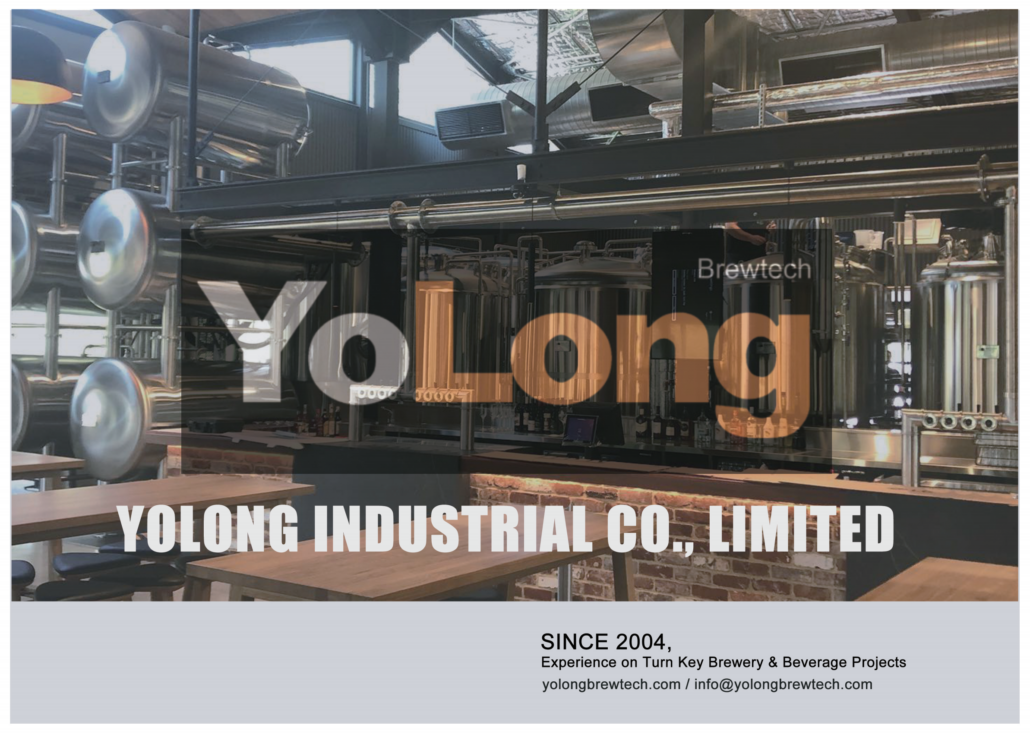
Troubleshooting Common Issues with Beer Fermenters
Beer fermenters are the heart of any brewery setup. However, even the most advanced systems can face hiccups. Let’s dive into some common challenges and their solutions:
1. Temperature Fluctuations
Fermenting beer at the wrong temperature can cause off-flavors. For instance, if the temperature is too high, you might get fruity or solvent-like notes, while too low can lead to incomplete fermentation.
Solution: Invest in fermenters with integrated temperature control systems. Ensure your brewery space has adequate insulation and consider using glycol chillers for precision.
2. Contamination Risks
Bacterial or wild yeast contamination can ruin your batch, leading to sour or unexpected flavors.
Solution: Sterilize fermenters thoroughly after each use. Use caustic cleaners, hot water, and sanitizers to maintain hygiene.
3. Over-Pressurization
Pressure build-up can cause safety hazards or affect beer quality by over-carbonating it.
Solution: Use pressure-relief valves and monitor CO2 levels closely. Regularly check seals and gaskets for wear.
The Brewing Process Explained
Brewing beer is a fascinating journey that turns basic ingredients—water, malt, hops, and yeast—into a delicious beverage. Here’s an overview of the key steps:
1. Malting
The process begins with malted grains, typically barley. Malting involves soaking the grains, germinating them, and then drying them to halt germination. This step develops the enzymes needed for starch conversion later.
2. Mashing
Malted grains are milled and mixed with hot water in a mash tun. The heat activates enzymes, breaking down starches into fermentable sugars.
3. Lautering
The sugary liquid, or wort, is separated from the spent grains in a lauter tun. This step ensures you’re left with a clear wort for boiling.
4. Boiling
The wort is boiled in a brew kettle. Hops are added to impart bitterness, flavor, and aroma. Boiling also sterilizes the wort.
5. Fermentation
After cooling, the wort is transferred to a fermenter. Yeast is added, and the fermentation process begins. The yeast consumes the sugars, producing alcohol and CO2.
6. Conditioning and Packaging
Once fermentation is complete, the beer is conditioned to enhance its flavor. It’s then filtered, carbonated, and packaged in kegs, bottles, or cans.
Capacity, Space, Design, Layout, and Customization of a Brewery Setup
Here’s a breakdown of the critical parameters for setting up your brewery:
| Parameter | Details |
|---|---|
| Capacity | Determine production scale: microbrewery (<15 barrels), craft brewery (15-60 barrels), or large-scale. |
| Space | Allocate at least 1,000 sq ft for microbreweries, 5,000+ sq ft for larger setups, including storage. |
| Design | Open layouts with efficient workflow for brewing, fermenting, and packaging are recommended. |
| Layout | Ensure separate areas for brewing, fermenting, and cleaning to avoid cross-contamination. |
| Customization | Tailor equipment (e.g., brew kettles, fermenters) to your recipe needs and local brewing regulations. |

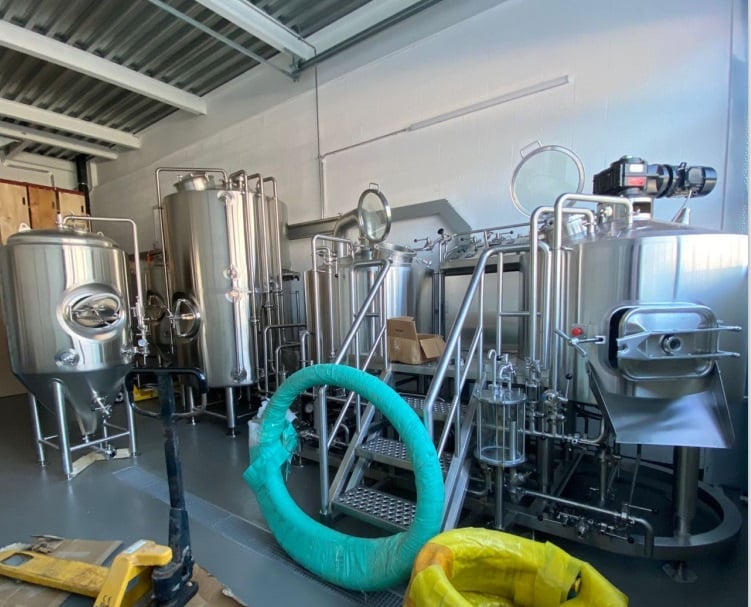
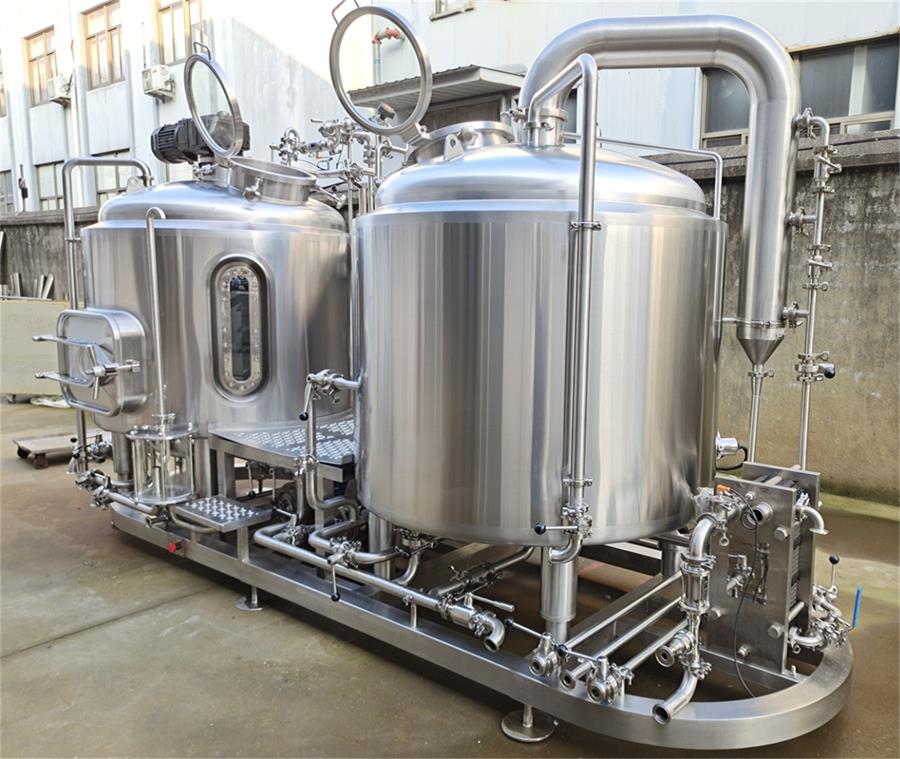

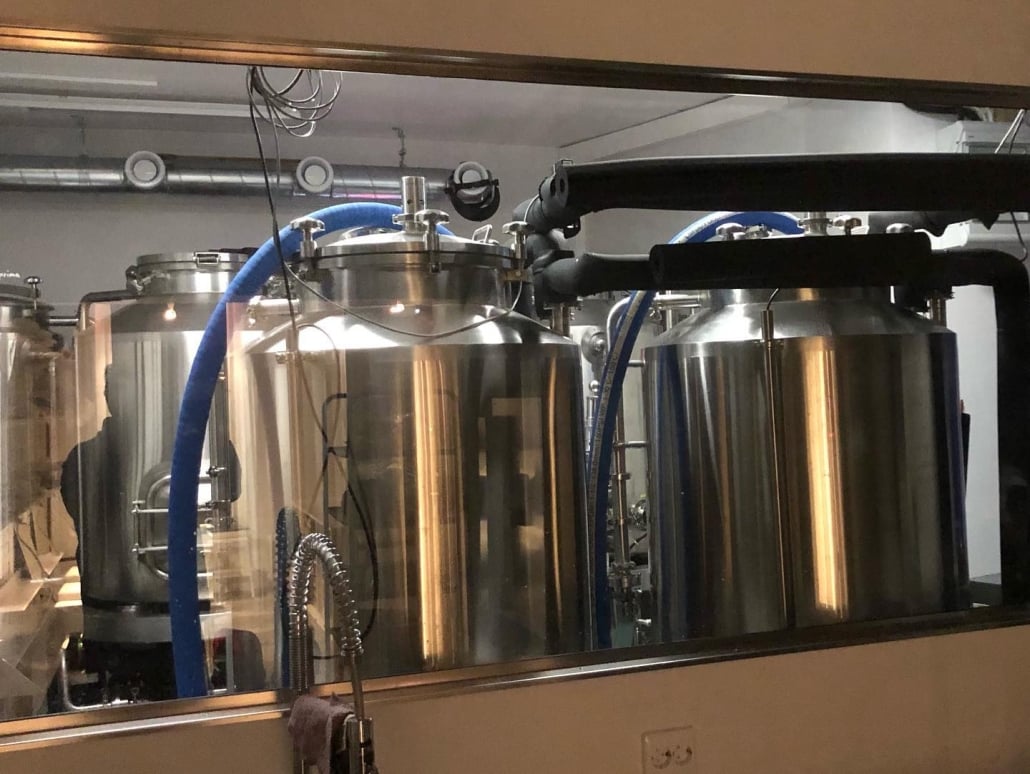
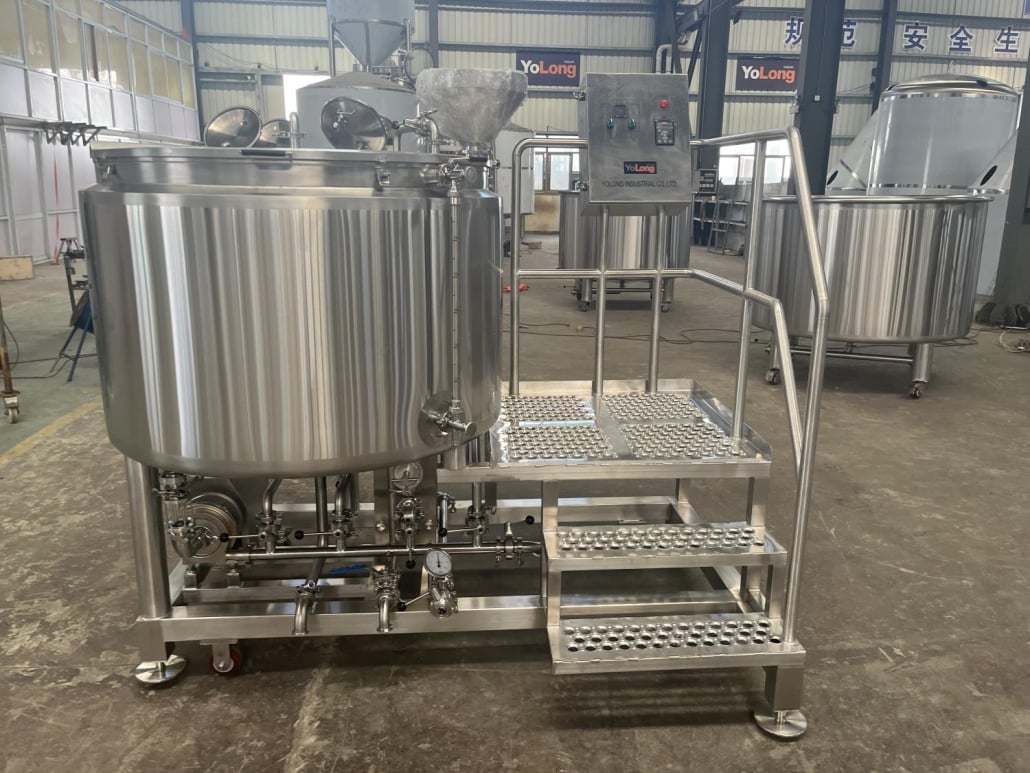
Suppliers and Price Ranges
Choosing the right supplier is crucial for acquiring reliable equipment. Below is a detailed overview:
| Equipment | Top Suppliers | Price Range |
|---|---|---|
| Brew Kettles | Ss Brewtech, Blichmann Engineering | $5,000 – $20,000 |
| Fermenters | Spike Brewing, Craft Kettle | $3,000 – $15,000 |
| Glycol Chillers | G&D Chillers, Pro Refrigeration | $4,000 – $12,000 |
| Packaging Systems | Wild Goose, Codi Manufacturing | $10,000 – $100,000+ |
Installation, Operation, and Maintenance
| Aspect | Details |
|---|---|
| Installation | Hire professionals to install brewing systems and plumbing. Plan for permits and inspections. |
| Operation | Train staff on equipment use and safety protocols. Automate repetitive tasks where possible. |
| Maintenance | Schedule regular cleaning of tanks and pipes. Perform annual servicing for glycol chillers. |
How to Choose the Right Supplier
Here’s what to consider when selecting a supplier:
| Criteria | Details |
|---|---|
| Reputation | Look for suppliers with excellent customer reviews and industry expertise. |
| Customization | Ensure they can tailor equipment to your specific brewing process and recipes. |
| Warranty | Verify warranty terms for major equipment like fermenters and brew kettles. |
| Support | Opt for suppliers offering after-sales support and easy access to replacement parts. |
| Cost | Balance quality with affordability. Avoid overly cheap options that may compromise quality. |
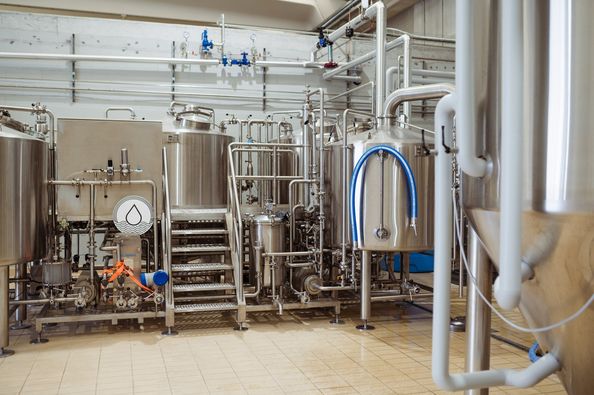
Comparing Pros and Cons of Brewery Setup Options
| Option | Advantages | Limitations |
|---|---|---|
| Microbrewery | Lower startup costs, flexibility | Limited production capacity |
| Craft Brewery | Strong brand identity, higher margins | Requires more space and investment |
| Large-Scale Brewery | High efficiency, large output | Significant capital and operational costs |
FAQ
| Question | Answer |
|---|---|
| How much does it cost to set up a brewery? | Costs vary from $100,000 for microbreweries to millions for large-scale operations. |
| What permits are needed? | Federal (TTB) and state-level brewing permits, plus health and safety certifications. |
| How long does it take to start brewing? | Typically 6-12 months after planning and installation. |
| Can I start with second-hand equipment? | Yes, but inspect for wear and compatibility with your brewing goals. |
Additional FAQs About Brewery Setup
1) What’s the minimum utility infrastructure for a small brewery setup?
- Typical baseline: 3-phase power (208–480V, 60–200A depending on brewhouse), natural gas or steam boiler (0.5–2.0 MMBTU/hr for 5–20 BBL), potable water 5–10 gpm at 40–60 psi with carbon filtration, trench drains with proper slope, and glycol loop sized for concurrent fermenter loads.
2) Should I choose electric, direct-fire gas, or steam for my brewhouse?
- Steam offers best heat control and efficiency for 10 BBL+; electric is clean and precise for nano/micro where power rates allow; direct-fire gas is cost-effective but less uniform. Factor local energy costs, ventilation, and expansion plans.
3) How do I estimate cellar tank count for my production plan?
- Start with weekly turns: Annual bbl ÷ 52 = weekly bbl. Divide by typical fermentation + conditioning days (e.g., 14 days ales, 28 days lagers) to size fermenter and brite tank counts. Plan 20–30% headroom for seasonality and pilot runs.
4) What are key floor and drain considerations in brewery setup?
- Non-slip epoxy or sealed concrete, 1–2% slope toward chemical-resistant trench drains with baskets, splash guards near CIP areas, and curbing to separate packaging from hot-side. Verify local code on indirect waste and backflow prevention.
5) How can I reduce contamination risk during startup?
- Implement a written sanitation SOP: CIP verification (conductivity/temperature), ATP swabbing, dedicated hoses by zone, color-coded tools, and scheduled passivation. Train staff on aseptic transfers and gasket inspection/replacement intervals.
2025 Industry Trends Impacting Brewery Setup
- Faster commissioning: Modular skid-mounted brewhouses and pre-plumbed cellars cut install time by 20–30%.
- Sustainability by design: CO2 recovery from fermenters, heat recovery on wort cooling/CIP, and low-GWP glycol blends become standard options in RFPs.
- Automation affordability: PLC + mobile HMI, inline DO/CO2 sensors, and auto-CIP now viable for sub-$500k projects.
- Supply chain normalization: Lead times for custom tanks improved, but ASME-stamped pressure vessels and canning lines still face longer queues.
- On-premise focus: Taproom-centric brewery setups prioritize compact footprints, acoustic treatment, and visitor-safe traffic flows.
2025 Data Snapshot for Brewery Setup Planning
| Metric | 2022 | 2024 | 2025 (proj.) | Notes / Sources |
|---|---|---|---|---|
| Avg. lead time, 10–20 BBL brewhouse | 20–26 wks | 14–20 wks | 12–18 wks | Supplier surveys; Brewers Association supplier updates |
| Share of new installs using steam | 46% | 49% | 51% | Energy cost comparisons; vendor shipments |
| CO2 recovery adoption (5k–50k bbl/yr) | ~3% | ~7% | 10–12% | IBD technical sessions; vendor case releases |
| Average turnkey microbrewery CAPEX (5–10 BBL) | $450–750k | $500–800k | $520–820k | U.S. craft start-up budgets; equipment inflation easing |
| Inline QA sensors at commissioning (DO/CO2) | 22% | 33% | 40% | Trade press, instrumentation vendors |
Sources:
- Brewers Association: https://www.brewersassociation.org
- Institute of Brewing & Distilling (IBD): https://ibd.org.uk
- LME/Nickel and stainless indices for equipment materials context: https://www.lme.com
Latest Research Cases
Case Study 1: Modular Cellar Speeds Brewery Setup by 28% (2025)
Background: A new 7,500 bbl/year brewery aimed to open before summer peak but faced labor constraints.
Solution: Selected a modular, skid-mounted 15 BBL brewhouse with pre-plumbed glycol manifolds, pre-wired PLC, and factory FAT (factory acceptance testing).
Results: Commissioning time reduced by 28%; first wort to first sale in 11 weeks; startup losses cut by 18% through auto-CIP repeatability. Sources: Brewers Association 2025 Startup Panel; vendor application notes (Premier/Specific/Ss Brewtech Pro).
Case Study 2: Taproom Brewery Cuts CO2 Purchases 55% via Recovery (2024/2025)
Background: Urban taproom (12 BBL system) struggled with CO2 price volatility and supply interruptions.
Solution: Installed small-footprint fermenter CO2 recovery with polishing and storage; integrated spunding in 2-bar unitanks; upgraded brite tanks with better insulation.
Results: 55% reduction in purchased CO2, improved carbonation consistency, and payback in 24–30 months. Sources: IBD presentations; Pentair/Chart case summaries; brewery sustainability benchmarking.
Expert Opinions
- Bart Watson, Chief Economist, Brewers Association
Viewpoint: “Build budgets that assume normalized but not pre-2020 lead times. Cash flow modeling for the first 18 months is as critical as brewhouse size.” - John Palmer, Author and Brewing Consultant
Viewpoint: “For most startups, pressure-capable unitanks simplify the brewery setup—fewer transfers, better oxygen control, and faster tank turns.” - Katherine C. Smart, Professor of Brewing Science; Former AB InBev Global R&D VP
Viewpoint: “Design quality in from day one: inline DO measurement and validated CIP save more beer than they cost.”
Citations:
- Brewers Association: https://www.brewersassociation.org
- IBD resources: https://ibd.org.uk
Practical Tools and Resources
- Brewers Association Start a Brewery Hub (planning, licensing, safety): https://www.brewersassociation.org
- TTB Permitting (U.S. federal): https://www.ttb.gov/beer
- ProBrewer Calculators (brewhouse sizing, chiller loads): https://www.probrewer.com
- G&D Chillers Load Calculator: https://gdchillers.com
- OSHA/NIOSH CO2 Safety Guidance: https://www.cdc.gov/niosh
- ASTM A967 Passivation Standard (stainless tanks): https://www.astm.org/a0967_a0967m-17.html
- Anton Paar Inline DO/CO2 instrumentation: https://www.anton-paar.com
Note: Always verify local building/fire codes, wastewater discharge limits, and pressure vessel certifications (ASME) before finalizing your brewery setup.
Last updated: 2025-09-02
Changelog: Added 5 new FAQs, 2025 trends with data table, two recent case studies, expert viewpoints, and a curated tools/resources list with authoritative sources.
Next review date & triggers: 2026-01-15 or earlier if equipment lead times shift by >20%, major code/regulatory changes occur, or CO2 market disruptions impact brewery setup assumptions.
Share this entry
Interested in learning more about Brewing Systems including additional details and pricing information? Please use the form below to contact us!
YOLONG BREWERY EQUIPMENT FAQS
- Commercial Brewery / Craft Brewery / Microbrewery / Nanobrewery
- What is The Difference Between Craft Beer and Industrial Beer?
- The Bespoke Differences In Custom Brewing Systems
- Everything You Need to Know About Kettle Souring
- How to Choose Brewing Equipment for Your business?
- How To Choose The-Best Partner To Build Your Commercial Microbrewing System?
- Two Detection Sensors That You Need To Use In Your Brewhouse System
- Remote Control Applications in Brewing Equipment/How does it work?
- How To Clean Your Brand New Brewery Tanks?
